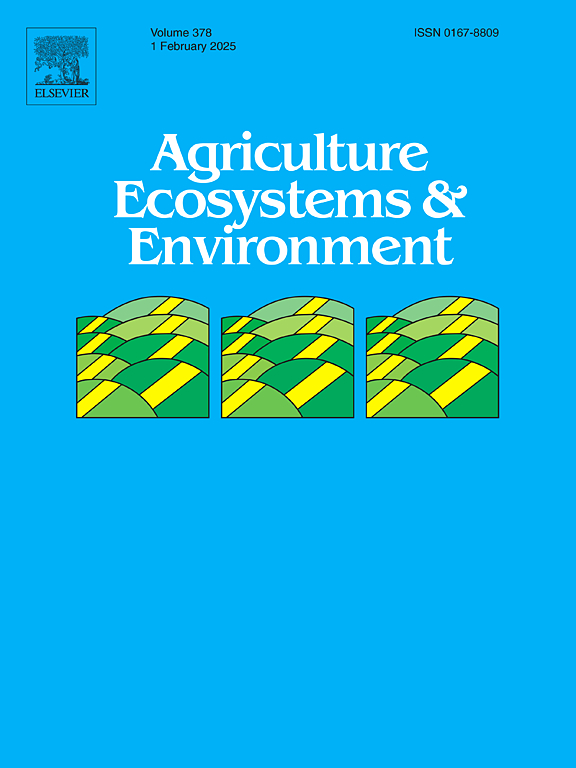Aboveground vegetation communities affect dung seedling richness and density based on the diet selection of large herbivores
IF 6
1区 农林科学
Q1 AGRICULTURE, MULTIDISCIPLINARY
引用次数: 0
Abstract
The function of the dung seed bank from large generalist herbivores in grassland ecosystems is often overlooked. The dung seed bank is the product of the canopy seed bank ingested by herbivores that then accumulates in their feces. However, the mechanisms by which aboveground vegetation composition and structure affect the dung seed bank remain unclear, especially when considering the forage preferences effects of large generalist herbivores. We conducted a 4-year (2019–2022) rotational grazing experiment with yaks in an alpine meadow during the warm season on the northeastern Qinghai-Tibetan Plateau and investigated the aboveground vegetation community height, richness, and biomass; the forage preferences of the yaks; and the richness and density of dung seedlings. Aboveground vegetation community height, richness, and biomass showed fluctuations across the years and seasons. During the warm season, the dung seedling richness and density were 0.042 ± 0.013 species/g dung and 0.112 ± 0.043 seedlings/g dung, respectively. Among the 63 species of plants that were present as aboveground vegetation and that germinated from the dung samples, 65.08 % had a neutral preference for foraging by the yaks. Significant differences between yak dung seedlings and aboveground vegetation composition indicated the potential for dung seedlings to promote microhabitat patchiness around dung deposition sites. Aboveground vegetation community height had a negative effect on the dung seed bank, whereas richness and biomass had a positive effect. Our findings suggest that the aboveground vegetation community structure affects the size and composition of the dung seed bank through its effect on the diet selection of large generalist herbivores. We emphasize that the complementary roles of the herbivore dung seed bank and the soil seed bank should be considered when assessing the contribution of the soil seed bank to aboveground vegetation regeneration.
求助全文
约1分钟内获得全文
求助全文
来源期刊

Agriculture, Ecosystems & Environment
环境科学-环境科学
CiteScore
11.70
自引率
9.10%
发文量
392
审稿时长
26 days
期刊介绍:
Agriculture, Ecosystems and Environment publishes scientific articles dealing with the interface between agroecosystems and the natural environment, specifically how agriculture influences the environment and how changes in that environment impact agroecosystems. Preference is given to papers from experimental and observational research at the field, system or landscape level, from studies that enhance our understanding of processes using data-based biophysical modelling, and papers that bridge scientific disciplines and integrate knowledge. All papers should be placed in an international or wide comparative context.
 求助内容:
求助内容: 应助结果提醒方式:
应助结果提醒方式:


